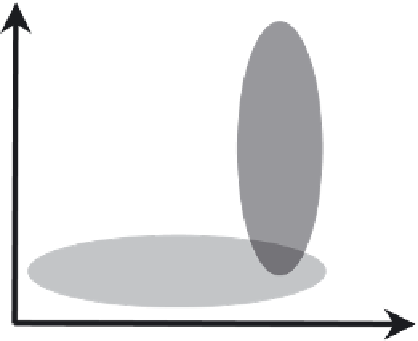Agriculture Reference
In-Depth Information
Plant production
synthetic chemicals
(pesticides)
Organic
nutrients
(N, P, K)
Figure 13.1
Relationship between nutrient inputs and the use of synthetic compounds in organic
and conventional plant production.
would just show the situation at the time of the study. Once the data had been compiled and
were ready to publish, new varieties may have been introduced, or farming practices or trading
patterns may have changed in either system, and the comparison would no longer be valid.
In contrast, it is both feasible and relevant to investigate the effects of specified aspects of
organic and conventional farming systems on food quality, including effects on human health.
Variation can be reduced by keeping constant those factors that are not being investigated. The
investigation is relevant because if we come to better understand whether and how choices
made by farmers, processors, traders and others involved in food supply chains affects health,
this will allow systems improvement, not just documentation of a snapshot of a constantly
changing situation. Knowing these causes and effects can also be used to ensure that better
systems are developed for increased productivity and other desirable aspects, without losing
existing advantages of quality, by estimating the effect of a change in the causal factors before
it is implemented.
Animal production
synthetic chemicals
antibiotics
Conventional
Organic
nutrients
(feed units, kJ)
Figure 13.2
Relationship between nutrient inputs and the use of synthetic compounds in organic
and conventional animal production.









